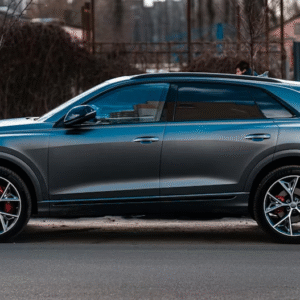When You Hear “Porthole”
You probably picture a small round window on a ship or plane, right? Well, here’s a surprise: farmers and scientists also install portholes — or cannulas — on cows.
What Are Cow Portholes?
A cannulated (or fistulated) cow has undergone surgery to insert a cannula — essentially a sealed opening — in its stomach. Think of it like a small plastic-rimmed window giving direct access to the cow’s digestive system.
Why Do This?
Mainly, it’s for research and veterinary care. With this setup, scientists can study digestion, test feed efficiency, and examine how cows process different diets — all without repeatedly sedating or cutting open the animal.
How It Started
This practice dates back to 1928 when researchers Arthur Frederick Schalk and R.S. Amadon began using portholes to study digestion. They collected samples of partially digested food, gases, and microbes, unlocking insights into improving cow feeding practices.
What They’ve Learned
For example, a 1939 study showed that the pH inside a cow’s rumen rises before feeding, offering clues on optimizing diets. By understanding digestion, farmers can boost milk production, improve growth, and even reduce methane emissions.

The Procedure
Before surgery, the cow fasts for 24 hours. During the operation, the cow stays standing under local anesthesia. A veterinarian carefully cuts a small opening and installs the rubber cannula. While the procedure is invasive, many researchers claim the cows recover well and can live up to 15 years.
Ethical Concerns
However, not everyone agrees. Animal rights groups like L214 in France and PETA argue the practice is cruel, unnecessary, and exploitative. Critics highlight that many cows already suffer from health issues — adding a porthole just adds to the burden. Petitions and protests are pushing to ban the procedure altogether.
Are There Alternatives?
Yes, some. Scientists are developing lab models that mimic a cow’s digestive system, reducing the need for live animals. In Europe, vets avoid surgical portholes and instead use long flexible tubes (like giant straws) to collect stomach fluid — less invasive but, some say, less precise.
Special Uses
In North America, some farms and vet schools keep porthole-equipped cows as donors for microbiota transplants — essentially a gut reboot for sick cows. By transferring healthy microbes, they help restore balance in animals with digestive problems.
The Bigger Debate
Ultimately, this raises a larger question: Are we sacrificing animal welfare for agricultural progress? Supporters argue the research leads to sustainability and better animal health, while critics believe it prioritizes profit over compassion.
What’s your take? Should we keep using portholes on cows or seek more ethical solutions? Share your thoughts on Facebook!




